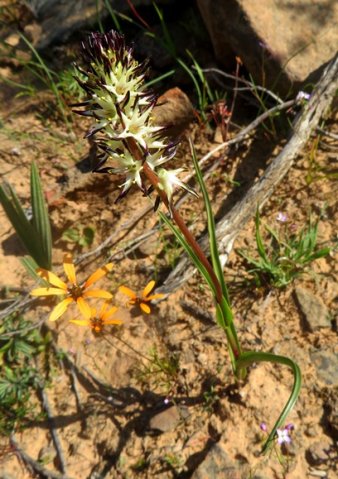Wurmbea

Author: Ivan Lätti
Photographer: Thabo Maphisa
Wurmbea is a genus in the Colchicaceae family of perennial geophytes that grow annual parts above-ground from deep-seated, long-necked corms in thin dark tunics. Cormlets may form and cataphylls are sometimes present. The solid, erect stem is unbranched and solitary, its length variable.
Two to four stem-leaves are borne, one of which basal in some species. The leaves alternate or spiral, tightly sheathing the stem. Leaf-shape is thread-like to linear, quill-like, lanceolate or ovate, the blade sometimes recurving and channelled.
The flowers grow sessile in cylindrical, variably spaced spikes with no floral bracts. Flower colours are white, cream or pink, sometimes with dark-red or purple. The tepals are joined at the base in a short or long tube that is cylindrical or cup-shaped.
There are usually six spreading stamens, their filaments arising from near the perianth segment bases. Paired nectar glands usually occur low down in the tepal walls. The superior ovary is usually three-locular and somewhat three-lobed. There are usually three short styles.
Some species are unpleasantly scented and pollinated by flies.
The fruit is an ovoid to ellipsoid capsule. The black or brown seeds are globular.
There are 38 species in this genus, half of which occur in Australia, the rest mainly in southern Africa.
The plant in picture is Wurmbea spicata var. spicata seen in the Biedouw Valley during September (Leistner, (Ed.), 2000; Vlok and Schutte-Vlok, 2015; Manning, 2007; iNaturalist).

